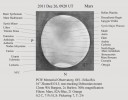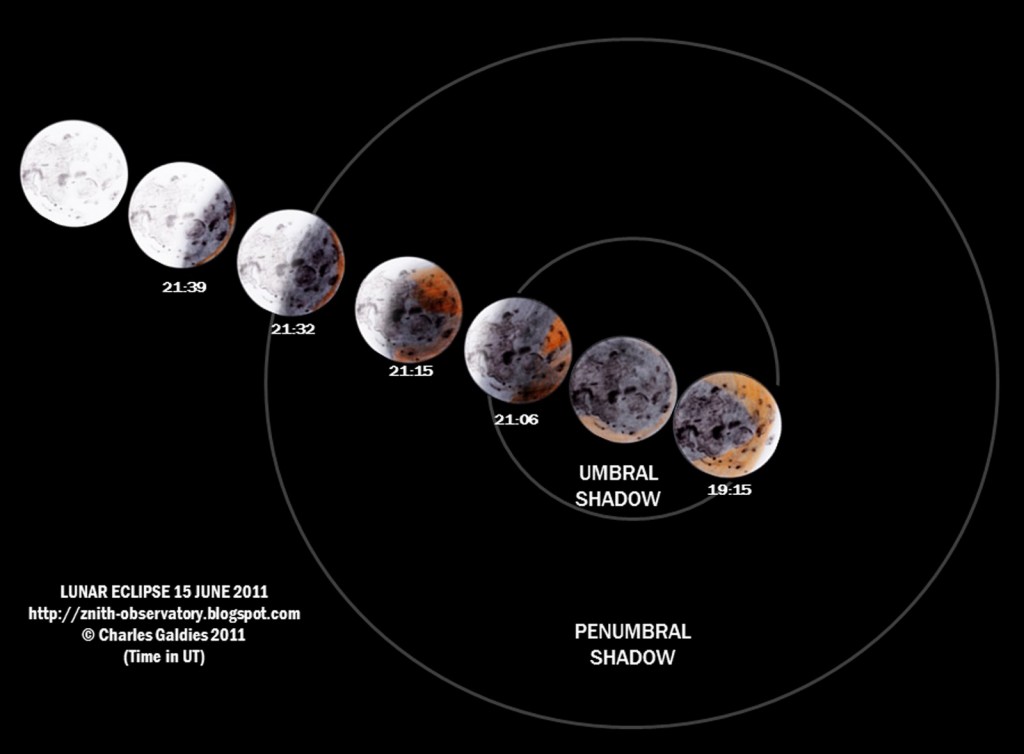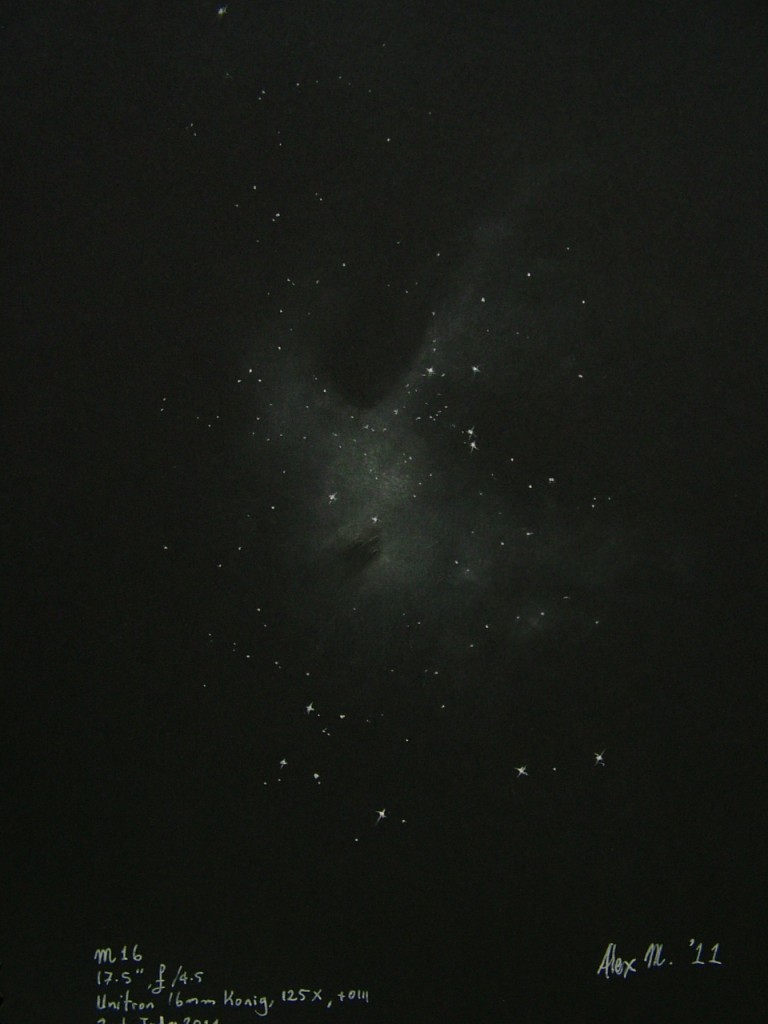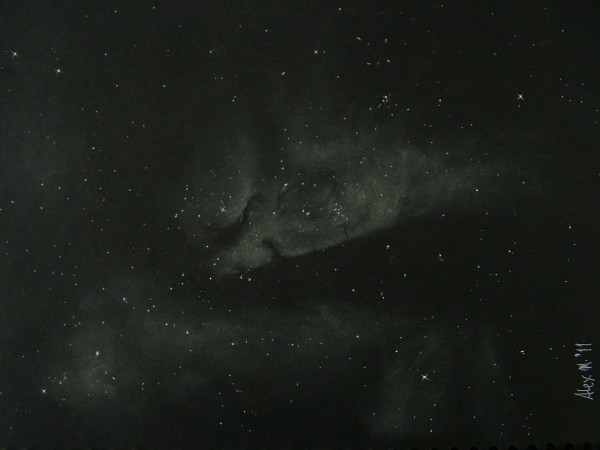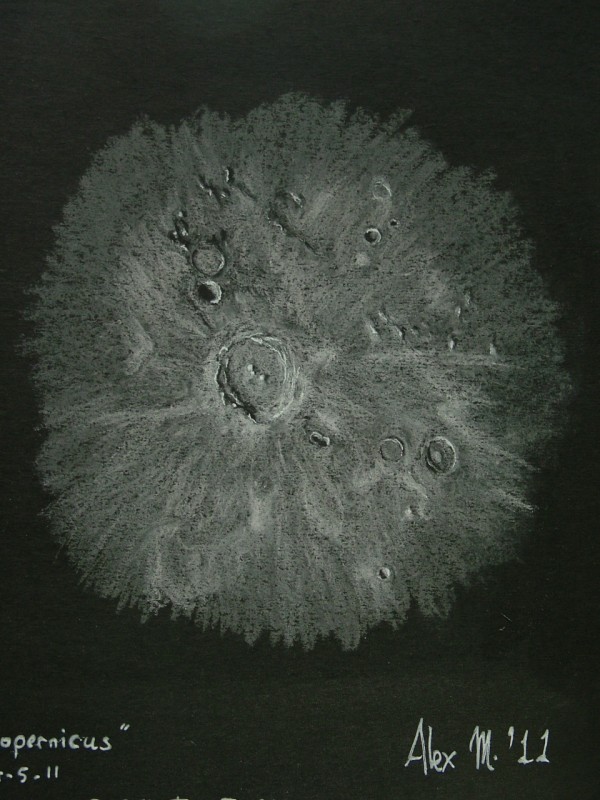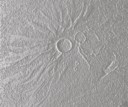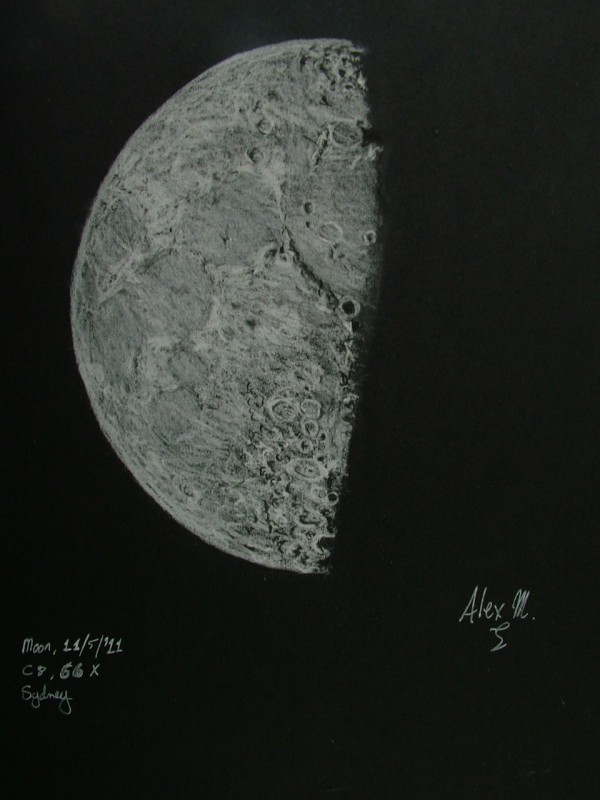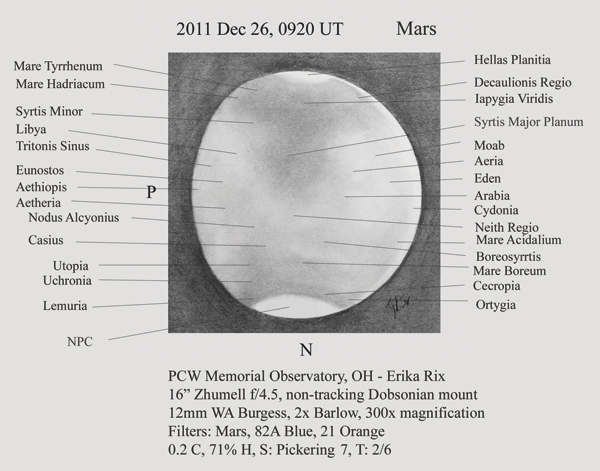
2011 12 26 – Mars
www.pcwobservatory.com
Erika Rix, Ohio, USA
We’ve been fortunate to have a few clear nights for observing lately. Mars season is upon us and it feels great to have a chance to try out my new filter set: Mars, 82A blue and 21 orange.
This sketch is a composite of all three filters. I started off with the Mars filter for an overall view. Syrtis Major was the first area I noticed. Next were the north polar cap and the darkened area around it. Faint structure started to appear but became even more apparent when I switched to the orange filter. Lastly was the blue filter that made the NPC and Hellas pop out dramatically. The following limb was brightened. Seeing was above average with slightly poor transparency. The session had to end because of clouds, but I felt the session was pretty much completed by that time anyway.
The sketch was created using charcoal on card stock, charcoal pencils, willow charcoal, vinyl eraser pencil and kneaded rubber eraser.
